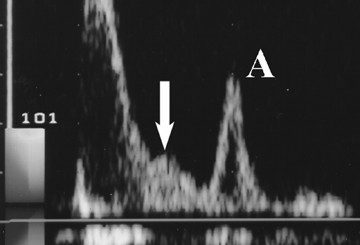Annihilation Coincidence Detection
Annihilation Coincidence Detection
Annihilation Coincidence Detection
Annihilation Coincidence Detection is a Basic Principles of Which Imaging?
[A] MRI
[B] CAT Scan
[C] PET Scan
[D] Angiogram
Annihilation Coincidence Detection
Mechanism
- When a positron undergoes mutual annihilation with a negative electron, their rest masses are converted into a pair of annihilation photons
- The photons have identical energies (511 keV) and are emitted simultaneously, in 180-degree opposing directions, usually within a few tenths of a mm to a few mm of the location where the positron was emitted, depending on the energy and range of the positrons.
- Near-simultaneous detection of the two annihilation photons allows PET to localize their origin along a line between the two detectors, without the use of absorptive collimators.
- This mechanism is called annihilation coincidence detection (ACD).
Clinical Question-12
Clinical Question-12 A 56 years male smoker patient has complain of dyspnoea on exertion. Echocardiogram...
Simplified Bernouli Equation
Contents1 Simplified Bernouli Equation for measurement of RV Systolic pressure:2 🔹 Simplified Bernoulli Equation:3 Where:4...
ECG Question-2
Contents1 What is the diagnosis of ECG?2 What is Bifascicular Block?3 What are the types...
Masquerading Bundle Branch Block
Contents1 What is ‘Masquerading Bundle Branch Block’ ?2 What are the types of MBBB?3 Standard...
Image Question-55
Contents1 What is the name of the wave marked by arrow?2 L-wave in Transmitral flow...
Procalcitonin
Contents1 Procalcitonin is usually produced in2 For Procalcitonin levels measurement in blood, Patients should be...
Hypothyroidism – Points to Remember
Contents1 Wolff-Chaikoff effect2 Amiodarone3 Lithium carbonate Hypothyroidism is likely the most common thyroid disorder encountered...
Right atrial inversion
Contents1 Right atrial inversion – (collapse)2 Minimum ————- ml of pericardial fluid is enough to...
Which of the following is used in treatment of chronic thromboembolic pulmonary hypertension?
Which of the following is used in treatment of chronic thromboembolic pulmonary hypertension? Which of...
Renal cell carcinoma
Renal cell carcinoma Most common type of renal cell carcinoma [A] Clear cell type[B] Papillary type[C] Chromophobe type[D] Collecting...
Stauffer syndrome is most commonly associated with
Stauffer syndrome is most commonly associated with [A] Bronchogenic carcinoma[B] Renal cell carcinoma[C] Thyroid carcinoma[D] Carcinoma pancreas
ECG findings suggestive of acute pericarditis
EKG findings suggestive of acute pericarditis acute pericarditis Myocardial Infarctiom 1 ST-elevation is less than...
Medicine MCQs-25
Contents1 A 55 year female, smoker, hypertensive comes to OPD with complains of Headache, pain...
Image Question-55
What is the most likely diagnosis from Echocardiogram? https://drive.google.com/file/d/1v_RTwbM4Uy-lt173_vNlwYUz_TCSFNLy/view?usp=sharing [A] RCM[B] HOCM[C] DCM[D] ASD Characteristic echocardiographic findings of RCM...
Pericardial tamponade – Which is more likely
Pericardial tamponade – Which is more likely [A] Isolated systolic hypertension[B] Mitral regurgitation[C] Equalization of...





